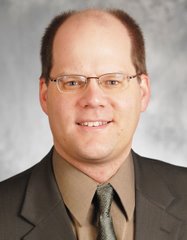Funding Disparities on K-12 Education
A received a question from a constituent about the K-12 education funding formula. If you look at the total amount per pupil received for all school districts in the state, you'll see that districts like Minneapolis and St. Paul receive significantly more than districts like Mounds View, White Bear Lake, and Centennial. Why the difference? I posed this question to our research staff and I'd like to present what I got back. (I could explain it in my own words but not so precisely as he did.) You'll see that all districts start with the same dollar amount per pupil at $5,734.
"One key difference relates to the amount of compensatory aid that, say Minneapolis, receives as compared with a suburb in your district (e.g. Centennial, district #12). For example, for FY 2008, under the base, Minneapolis would receive $12,353 in revenue per AADM (average adjusted daily membership, or pupil). As with other districts throughout the state, the basic formula provides the biggest chunk of that amount: $5,734 per pupil (or 46.4% of the total for Minneapolis).
"For Minneapolis, the second biggest revenue contributor is compensatory aid, at $1,586 per pupil (or 12.8% of the total). Compensatory revenue is based on each school building's count of students that are eligible for a free or reduced price meals. Because Mpls/St. Paul have a higher proportion of students meeting this criterion (which is basically measures levels of students living in poverty) — those two school districts receive more compensatory revenue to help address the additional needs of these students.Special education revenue is the third biggest revenue source for Minneapolis. For FY 08, under the base, special education revenue contributed $1,503 per pupil (or 12.2% of the total).
"In contrast, for Centennial, compensatory aid only comprises $39 per pupil (of the $8,213 in revenue per pupil). This is significantly lower than the amount of compensatory aid that Minneapolis receives. This is because Centennial has few students eligible for free and reduced price meals.Another potential source explaining the revenue per pupil discrepancy between Mpls/St. Paul and the suburbs stems from special education. While Centennial still receives a considerable amount of special education revenue ($900 per pupil under the base FY 08, or 10.96% of its total) — Minneapolis receives 67% more special education revenue per pupil than Centennial (or $1,503 per pupil).
"Evidently, Minneapolis incurs more special education expenses to address the needs of its students receiving special education — accordingly, Minneapolis receives more special education funding to help pay for the costs of providing special education related services.While the following source of revenue is relatively small compared with the basic formula and special education — another difference between the suburbs and Mpls/St. Paul may also stem from the higher amounts of LEP revenue (limited English proficiency) that Mpls/St. Paul receive as compared with the suburbs. (For instance, under FY 08 base, Minneapolis would receive $155 per pupil in LEP revenue while Centennial only receives $7 per pupil.). Obviously, this is because Minneapolis has more students eligible to receive LEP revenue.
"In case you are interested, the following link to a look-up table allows one to enter in the number of a particular school district and you can see the particular revenue sources that make up that district's revenue — when you compare Minneapolis or St. Paul with the suburbs — you can see where the discrepancies stem from. HTTP://www.house.leg.state.mn.us/fiscal/files/k12distrev.xls."
What next?
A new organization in Minnesota called P.S. Minnesota has suggested that the state needs to create a new funding framework that reflects actual needs in Minnesota' school districts and simplifies the process. You can link to their five-page white paper on the web. Next year a study will come out on just what this formula might look like. The Governor made a line-item veto of the funding for the consultant to complete this study, however.
